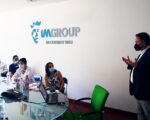Growing share of public spending on health in GDP of emerging economies to present an incredible case for smart healthcare products
North America to remain the top slot across all geographies, rise in deployment of IoT frameworks advancing smart health framework in key markets.
The sheer pace of digitization in healthcare sector has been a veritable force in propelling the demand for smart health frameworks worldwide. The growing adoption of smart healthcare products notably electronic health records (EHRs) has been used by industry stakeholders to capture new value propositions in patient-centred care. Increased penetration of IT in health care, spearheaded in recent years by internet of things (IoT), has spurred the use of such product in value-based care. The spectacular spread of IoT has enabled healthcare providers, payers, and controllers to make an efficient utilization of resources and bring greater value in patient care. Some of the key applications are in monitoring and treatment, inventory management, and health data storage and exchange.
Relentless efforts by governments in numerous countries around the world to boost smart healthcare ecosystem will help the smart healthcare product market expand at CAGR of 8.8% from 2019 to 2027.
Key Findings of Smart Healthcare Products Market Study
- Smart Health Ecosystem to Address Burden of Chronic Diseases in Adults: Worldwide, the incidence of chronic diseases, most notably diabetes and cardiovascular conditions, has been rising rapidly over the past two decades. The prevalence is high in developed economies as well emerging economies, especially in young adult populations. Smart healthcare products such as electronic health records are proving to be a major technological advancement in healthcare IT in assisting healthcare providers to reduce the burden of chronic diseases. Smart RFID cabinets, for example, have made monitoring of medical inventory possible in real time. As a result, such applications in clinical settings have led to substantial cost control, reduction in human error, and boost in the efficiency of all healthcare staff.









